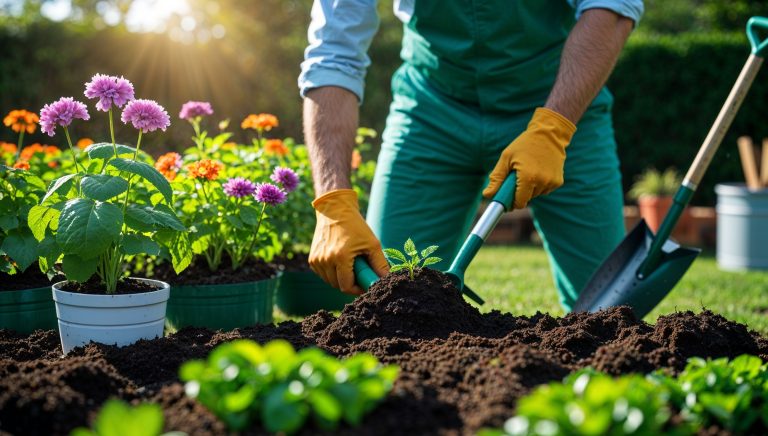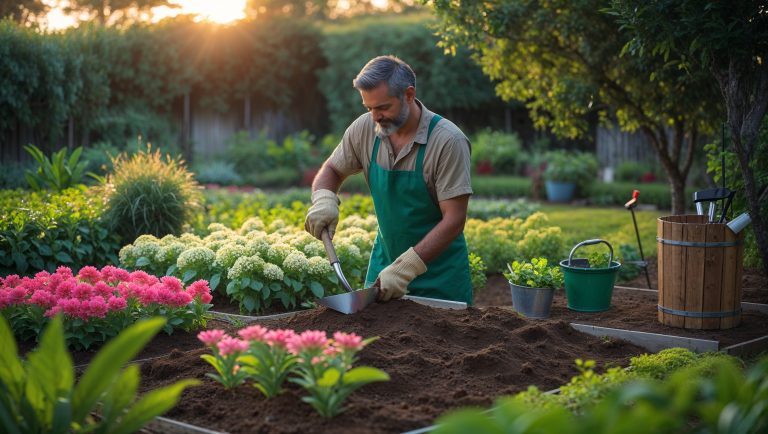

When it comes to gardening, the right tools can make all the difference. Whether you’re a seasoned gardener or just starting out, having the correct tools at your disposal ensures that your tasks are easier and your plants thrive. In this article, we’ll guide you through the essential gardening tools you need and how to choose the best ones for your garden.
Before you purchase any tools, it’s important to understand your gardening needs. The tools you choose will depend on the size of your garden, the types of plants you’re growing, and the tasks you need to accomplish. Whether you’re working in raised beds, a container garden, or a large backyard, the right tools will help you maintain your garden more efficiently.
For small gardens or container gardens, you’ll need smaller, more lightweight tools that can maneuver easily between pots or within tight spaces. Tools like handheld trowels, small pruning shears, and compact watering cans are perfect for these environments.
For larger gardens, you’ll need tools that can cover more ground and handle heavier workloads. Larger shovels, hoes, garden forks, and wheelbarrows are essential for digging, turning soil, and carrying materials across your garden.
While the specific tools you need will vary based on your gardening style and space, there are a few essential tools that every gardener should own. These tools will make your tasks easier and help you care for your plants properly.
A trowel is one of the most versatile tools you’ll own. It’s great for digging small holes, transferring plants, and breaking up soil. Whether you’re planting new flowers or transplanting seedlings, a trowel makes the job quicker and more precise.
Look for a trowel with a sturdy, ergonomic handle that feels comfortable in your hand. Stainless steel trowels are durable and easy to clean, making them an excellent choice for most gardeners.
Pruning shears, or secateurs, are vital for cutting back dead or overgrown branches, stems, and leaves. They help promote healthy growth by removing diseased or damaged parts of the plant and improving air circulation around the healthy portions.
Choose a pair of sharp, high-quality pruning shears with a comfortable grip. Look for shears with adjustable tension to make cutting easier and more efficient.
Watering your plants is essential for their growth, so it’s important to have the right watering equipment. A watering can is ideal for smaller gardens, while a hose with an adjustable nozzle is better for larger areas.
Choose a watering can with a long spout for precise watering, especially when tending to delicate plants in containers. For larger gardens, an expandable hose or one with multiple settings allows you to adjust the water flow to suit your needs.
A garden fork is a must-have for turning the soil, breaking up compacted earth, and aerating the soil. It’s perfect for working in garden beds, especially if you need to mix compost or other soil amendments.
Look for a sturdy, well-balanced fork with strong tines made from durable material, such as stainless steel. A comfortable grip will also make it easier to use for longer periods.
A shovel or spade is essential for digging holes, transplanting plants, and turning the soil. Shovels are typically used for lifting and moving soil, while spades are ideal for edging and digging trenches.
When choosing a shovel, look for one with a strong, reinforced handle and a sharp, pointed tip. The blade should be durable and designed to handle the type of soil in your garden, whether it’s heavy clay or sandy.
In addition to the basic tools, there are some specialized tools that can make your gardening tasks easier, especially if you are growing specific types of plants or dealing with certain gardening needs.
A hoe is perfect for weeding and breaking up the soil in garden beds. It’s particularly useful for large, flat areas where you need to work quickly. A hoe with an adjustable handle allows you to control the depth and angle of the blade, making it versatile for various gardening tasks.
A garden rake is essential for smoothing out soil, collecting leaves, and removing debris from your garden beds. Rakes are available in different designs, including leaf rakes for lightweight tasks and landscape rakes for heavy-duty clearing.
If you have a lawn area in your garden, a lawn mower is a must-have. Choose between a push mower for smaller lawns or a riding mower for larger areas. Make sure the mower is well-maintained and has adjustable cutting height to suit different grass types.
A wheelbarrow is a time-saving tool that makes it easier to move soil, compost, plants, and tools around your garden. A well-balanced wheelbarrow with a sturdy frame and large wheels is ideal for transporting heavy loads without straining your back.
Proper maintenance is essential to extend the life of your gardening tools and keep them functioning efficiently. Neglecting your tools can lead to rust, dull edges, and poor performance.
After each use, clean your tools to remove soil, plant residue, and other debris. For metal tools, use a wire brush to scrub off any dirt and rust. Wipe the handles with a damp cloth to remove any grime. For tools that come into contact with soil, make sure to dry them thoroughly to prevent rusting.
Pruning shears, hoes, and shovels will need sharpening from time to time to keep them cutting efficiently. Use a sharpening stone or a sharpening tool to keep the edges of your tools sharp. A dull blade requires more effort to use and can cause damage to your plants.
Proper storage is essential for keeping your gardening tools in good condition. Hang your tools in a dry, cool place, and make sure to store them off the ground to prevent rusting. If you live in an area with harsh winters, consider storing your tools in a shed or garage to protect them from the elements.
Gardening doesn’t have to break the bank. While some tools can be expensive, there are many affordable options that will serve you just as well. Look for high-quality, budget-friendly tools that are durable and suited to your gardening needs.
When shopping for gardening tools on a budget, look for brands that offer quality tools at affordable prices. Consider purchasing tools individually instead of in expensive sets. Focus on the essentials first, like a good trowel, watering can, and pruning shears, before adding specialized tools.
Once you have your tools, it’s important to use them correctly to get the best results. Improper tool usage can lead to inefficiency and even injury.
Make sure to use tools with ergonomic handles that fit comfortably in your hands. Use the right tool for the job—don’t try to force a job with the wrong tool, as it can damage the plant and the tool. Also, take breaks when necessary to avoid straining your muscles, especially when working with heavy tools like shovels and wheelbarrows.